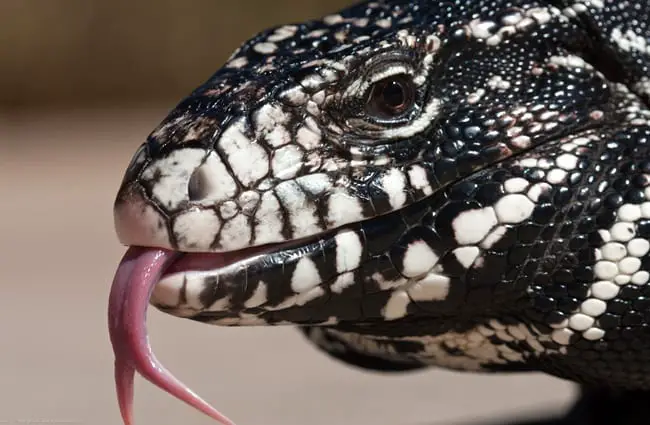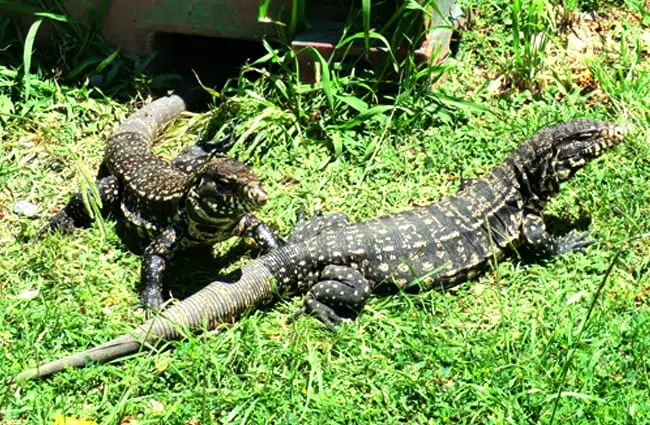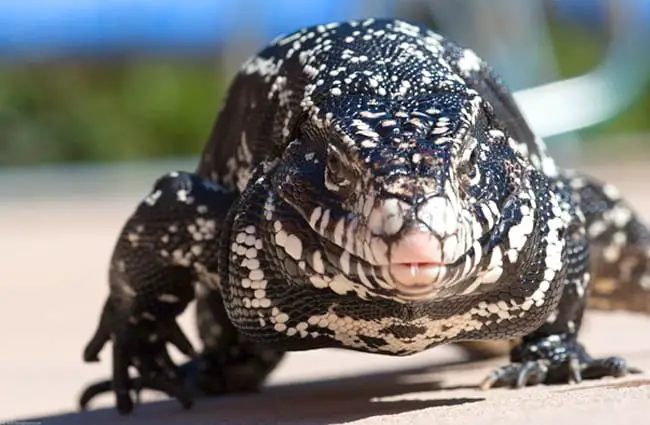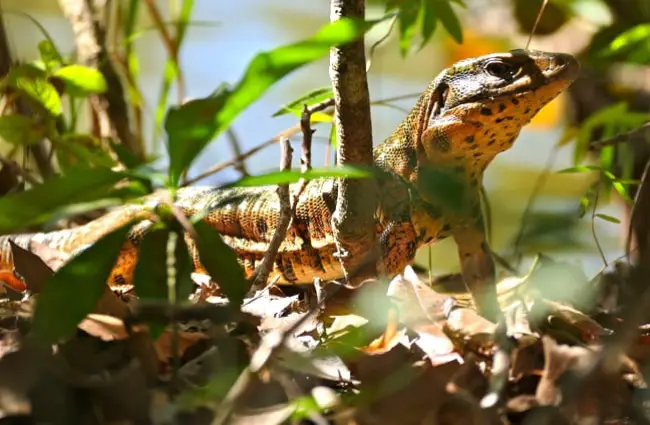The world of reptiles is filled with fascinating creatures, but few possess the intelligence, charisma, and sheer adaptability of the tegu lizard. These large, semi aquatic lizards, native to South America, are increasingly captivating the attention of herpetologists, animal enthusiasts, and even finding their way into the exotic pet trade. This article delves into the comprehensive world of tegus, exploring their natural history, behavior, ecological role, and interactions with humans.
What is a Tegu Lizard?
Tegus belong to the genus Tupinambis, a group of relatively large lizards known for their robust bodies, short legs, and powerful jaws. They are members of the Teiidae family, which also includes whiptails and other similar lizards. Several species exist, but the Argentine black and white tegu (Tupinambis merianae) and the golden tegu (Tupinambis rufescens) are the most commonly encountered. These lizards are not simply reptiles; they exhibit a level of intelligence and social behavior that sets them apart from many of their scaly relatives.

Physical Characteristics
Adult tegus can reach impressive sizes, growing up to four feet in length and weighing over 20 pounds. Their coloration varies depending on the species and individual, but typically involves a striking pattern of black and white bands or a golden hue. These patterns provide excellent camouflage in their natural habitat. They possess strong limbs ending in sharp claws used for digging and climbing, and their tails are muscular and account for a significant portion of their total length. A distinct feature is their thick, armored skin, providing protection against predators and environmental hazards.
Habitat and Distribution
Tegus are native to South America, primarily inhabiting the subtropical and tropical regions of Argentina, Brazil, Paraguay, Uruguay, and Bolivia. They thrive in a variety of habitats including grasslands, savannas, forests, and swamps, always remaining near a water source. This proximity to water is crucial, as tegus are skilled swimmers and frequently bask in the sun on riverbanks or near lagoons. They construct burrows for shelter, thermoregulation, and nesting. The presence of a readily available water source and suitable burrowing sites are key factors determining their distribution.
Diet and Hunting Strategies
Tegus are omnivorous, exhibiting a remarkably diverse diet. Their meals include insects, crustaceans, small mammals, birds, eggs, and fruits. They are opportunistic feeders, readily consuming whatever is available and easily obtained. They are known for their strong jaws and teeth, allowing them to crack open eggs and consume hard‑shelled invertebrates. Their hunting strategies vary depending on the prey, ranging from ambush predation to active foraging. They can hold their breath for extended periods while submerged, allowing them to stay underwater while searching for food.

Behavior and Social Interactions
Tegus are known for their active and inquisitive nature. They are diurnal, meaning they are most active during the day. They spend a significant portion of their time basking in the sun to regulate their body temperature. While often solitary, tegus are not entirely asocial. They establish home ranges and communicate through scent marking and body language. During breeding season, males may engage in ritualistic combat to establish dominance and access to females. Recent research suggests a higher level of cognitive ability than previously thought, including problem‑solving skills and a degree of trainability.
Reproduction and Life Cycle
The breeding season for tegus varies depending on the species and geographical location. Typically, it coincides with the warmer months. Females lay a clutch of eggs, often numbering between 20 and 30, in burrows or nests constructed from leaf litter and vegetation. The eggs are incubated for approximately 60 to 90 days, with temperature playing a crucial role in determining the sex of the hatchlings. Young tegus are miniature versions of their parents, possessing the same hunting instincts and inquisitive nature. They reach sexual maturity at around three to four years of age.
Ecological Role and Interactions
Tegus play an important role in their ecosystems as both predators and prey. They help control populations of insects and other invertebrates, while also serving as a food source for larger predators such as birds of prey and mammals. Their burrowing activities contribute to soil aeration and nutrient cycling. However, their introduction to non‑native environments, such as the southeastern United States, is causing ecological concern. As an invasive species, they pose a threat to native wildlife by preying on eggs and competing for resources.

Tegus and Humans
Historically, tegus were hunted for their meat and skin. Today, they are increasingly popular in the exotic pet trade, prized for their intelligence, docile temperament, and striking appearance. However, responsible ownership is crucial. Tegus require spacious enclosures, specialized diets, and consistent veterinary care. Their potential to become invasive species also raises concerns about their trade and ownership. Furthermore, tegus have a long history in indigenous cultures, often featuring in folklore and traditional medicine.
Encountering a Tegu in the Wild
If you encounter a tegu in the wild, it is best to observe it from a distance. They are generally not aggressive towards humans, but they may bite if threatened. Avoid approaching or attempting to handle the animal. Report any sightings to local wildlife authorities, especially in areas where tegus are not native.
Caring for a Tegu in Captivity
For zookeepers and dedicated reptile keepers, tegus require a significant commitment. Providing a large, secure enclosure with appropriate temperature gradients, humidity levels, and UV lighting is essential. Their diet should consist of a variety of insects, fruits, vegetables, and occasional meat sources. Regular veterinary check‑ups are crucial to ensure their health and wellbeing. Enrichment activities, such as providing digging substrates and puzzle feeders, can help stimulate their intelligence and prevent boredom. Avoid overhandling, as tegus can become stressed by excessive interaction.
Evolutionary History
The evolutionary history of tegus, like many reptiles, is still being unraveled. They belong to the Teiidae family, which is thought to have originated in South America during the Late Cretaceous period. Fossil evidence suggests that early teiids were relatively small and terrestrial. Over time, they diversified into a variety of forms, including the larger, semi aquatic tegus we know today. Genetic studies are helping to clarify their relationships with other lizard families and trace their evolutionary lineage.

Fun Facts About Tegus
- Tegus can enter a state of dormancy called brumation during colder months, similar to hibernation.
- They have a specialized Jacobson’s organ that allows them to taste the air by detecting scent particles.
- Their scales are incredibly durable and provide excellent protection against abrasion and predators.
- Some tegus have been observed using tools, such as rocks, to crack open eggs or access food.
- They can live for over 20 years in captivity with proper care.

The tegu lizard is a remarkable creature, captivating scientists and animal lovers alike. Their intelligence, adaptability, and unique characteristics make them a fascinating subject of study and a charismatic addition to the world of reptiles. Understanding their biology, behavior, and ecological role is crucial for ensuring their conservation and responsible management, both in their native habitats and beyond.

![Red Angus Closeup of a beautiful Red Angus cowPhoto by: U.S. Department of Agriculture [pubic domain]https://creativecommons.org/licenses/by/2.0/](https://animals.net/wp-content/uploads/2020/03/Red-Angus-4-238x178.jpg)




![Red Angus Closeup of a beautiful Red Angus cowPhoto by: U.S. Department of Agriculture [pubic domain]https://creativecommons.org/licenses/by/2.0/](https://animals.net/wp-content/uploads/2020/03/Red-Angus-4-100x75.jpg)

